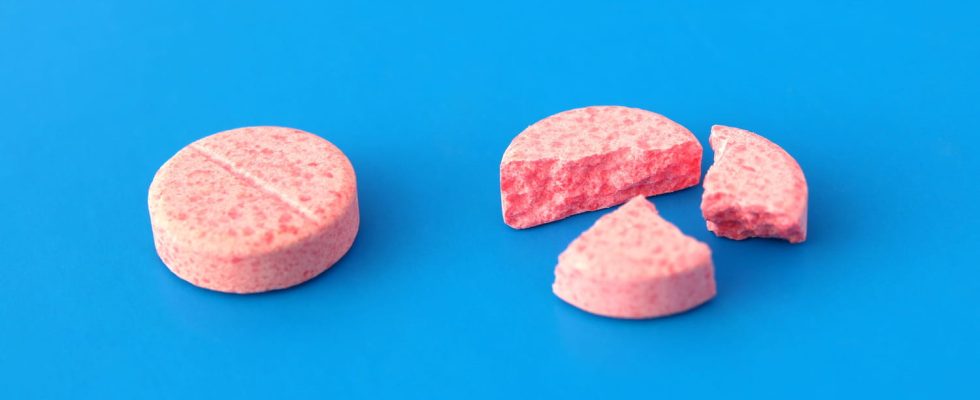Analgesics, antacids… Many drugs cannot be crushed and therefore expose you to undesirable effects that must be avoided.
Overdose, undesirable effects linked to immediate release, destruction, irritation of the mucous membranes… Side effects dangerous :
- Tardyferon® (ferrous sulfate), treatment of iron deficiency: several cases of mouth irritation and ulceration have been observed after ingestion of crushed tablets.
- Inexium® (esomeprazole), antacid : this drug is formulated in a gastro-resistant tablet to be released in the intestine. Crushing the tablet leads to release in the stomach and then destruction by gastric juices rendering the drug ineffective.
- Topalgic® LP (tramadol), analgesic : crushing breaks the prolonged release of the drug, which increases the dose and therefore the risk of adverse effects due to a massive release of active ingredient.
- Lasix Retard® (furosemide), diuretic: the retard form makes it possible to delay the release of the active principle and to extend the therapeutic effect over time. If the tablet is crushed, the active ingredient is released into the body all at once, leading to an overdose.
- Bi-Profenid® LP (ketoprofen LP)non-steroidal anti-inflammatory drug: grinding breaks the prolonged release of the drug, which increases the dose and therefore the risk of adverse effects due to a massive release of active ingredient.
- Digoxin Nativelle® (digoxin), antiarrhythmic: this medicine has a narrow therapeutic margin, which means that small variations in doses lead to a loss of efficacy. However, the crushing of a tablet increases the risk of loss of the product with deposits on the walls of the container.
- Fosamax® (alendronic acid), anti-osteoporosis medicine: cases of oropharyngeal ulceration have been reported after ingestion of crushed tablets.
- Gutron® (midodrine), treatment of orthostatic hypotension: the laboratory does not recommend crushing the tablets because of their sensitivity to light increasing the loss of effectiveness.
- Subutex® (buprenorphine), opioid substitution treatment : it is a sublingual tablet to be placed under the tongue until completely dissolved. Crushing it and swallowing it diminishes or even negates its effectiveness.
- Xeloda® (capecitabine) : like other anti-cancer drugs, this drug exposes you to eye irritation, headaches, vomiting and stomach irritation when crushed.
To note that overwriting certain medications like ibuprofen is possible but not recommended due to the occurrence of a bitter taste. Moreover, finasteride (treatment for benign prostatic hyperplasia) should not be crushed by a pregnant woman at the risk of exposing her fetus to malformations.
What are the risks of crushing a non-crushable medicine?
► One overdose and increased side effects related to an immediate release of the active substance into the blood when an LP (extended release) or retard form is crushed.
► One destruction of the drug by gastric fluid, in case of crushing of a sublingual tablet or a gastro-resistant form, leading to a reduction or cancellation of the therapeutic effect.
► One underdosing induced by a loss of product if it is a drug with a narrow therapeutic margin.
► irritations and ulcerations of the mucous membranes of the mouth or stomach caused by irritating substances.
► The destruction of an active principle susceptible to prolonged exposure to light.
► One allergy or toxicity induced by skin contact or by inhalation of certain active ingredients.
Drug crushing should be done as a last resort, when all alternatives have been considered. You should not crush a medicine on your own initiative since the information on this subject is not always indicated in the leaflet. Besides, a divisible drug is not necessarily crushable. If you have any questions, ask your doctor or pharmacist for advice.
